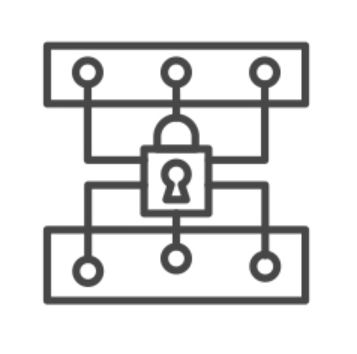Cybersecurity Innovation for a Safer Financial Future

Cyber Risks in Financial Services
Financial institutions—banks, investment firms, insurance providers, and fintech companies—are prime targets for cybercriminals due to the massive amounts of sensitive financial data they handle daily. Breaches can result in devastating consequences, including financial loss, reputational damage, regulatory fines, and erosion of customer trust.
Password Dependency: A Critical Vulnerability
Despite advances in digital finance, many institutions still rely heavily on password-based authentication, exposing themselves to phishing attacks, credential theft, and account takeover. Static credentials create a weak link that sophisticated attackers can exploit to gain access to high-value systems.
Notable Cyberattacks on the Financial Sector

2023: Credential-Stuffing Attack on a Major European Bank
A major European bank experienced a credential-stuffing attack that compromised thousands of customer accounts, forcing temporary service shutdowns and emergency security upgrades.

2022: Data Breach at a Leading Asian Fintech Company
One of the largest fintech companies in Asia was breached via stolen employee credentials, leaking sensitive user data and payment information to the dark web.

2021: Ransomware Attack on a North American Investment Firm
A top investment management firm in North America suffered a ransomware attack that encrypted critical customer data and demanded multimillion-dollar payment in cryptocurrency.
Benefits of Financial Authentication Solutions
Financial organisations must adapt to modern security standards to protect sensitive customer data and transactions while evolving beyond outdated, password-based models. swIDch’s Financial Authentication Slutions empower financial institutions by offering dynamic authentication based on cutting-edge cryptography, improving both security and user experience.
Why Advanced Authentication is Critical for Financial Services

Protection Against Credential Theft

Frictionless Security for Customers and Employees

Offline Authentication for High-Security Scenarios

Reduced Fraud Risk
-1.jpg)
How Financial Authentication Solutions Work
Traditional password-based authentication is vulnerable to phishing, brute-force attacks, and replay attacks.
swIDch’s Financial Authentication Solutions dynamically generate a one-time authentication code within the user’s device, without requiring a network connection at the moment of generation.
How It Enhances Security in the Enterprise Sector:
🔹 Ensure secure authentication even if communications are intercepted, as the dynamic codes are unique, cannot be reused, and are impossible to reverse-engineer.
🔹 Integrate easily with existing applications and systems with minimal disruption, without the need for costly hardware replacements.
🔹 Strengthen security and improve user experience by removing the dependence on passwords, tokens, or SMS-based one-time passwords (OTP).
🔹 Enable continuous, secure access across both traditional financial systems and new digital banking platforms without compromising performance or user convenience.
By implementing swIDch’s Financial Authentication Solutions, institutions can enhance security, streamline operations, and protect both customers and critical systems from evolving cyber threats.
-1.jpg)
Financial Services Security FAQs
-
It removes the reliance on static passwords, replacing them with dynamic, device-generated authentication codes that prevent credential-based attacks.
-
Yes. swIDch's solutions are ideal for securing both customer-facing apps (e.g., online banking, payment platforms) and internal systems (e.g., employee portals, backend servers).
-
Integration is straightforward, designed to work with minimal changes to the core system architecture while drastically strengthening authentication security.
Award Highlights










